
Key Points
- Leadership Continues to Concentrate in the Largest Names
- NYSE Breadth Needs Further Repair
- Metrics for the S&P 500 Hold Up the Best
- Small Caps Remain the Worst of the Bunch
- Bad Breadth is Now a Consensus Bearish Datapoint
This daily note is brought to you by Research by Potomac. Access the full Advisor toolkit and get a deeper look at the markets.
Chart in Focus:
The S&P 500 Equal Weight Index continues to lag the S&P 500 (Cap Weight) after failing at resistance at the 2012 lows. This is indicative of a market where leadership has begun to concentrate in the larger names within the index and confirms the weakening breadth metrics that we have been discussing for the past few weeks. The ratio is now testing its 200-day moving average as the 14-day RSI attempts to rebound from oversold levels. A bounce cannot be ruled out, but we are hard pressed to claim that leadership is broad at this time.
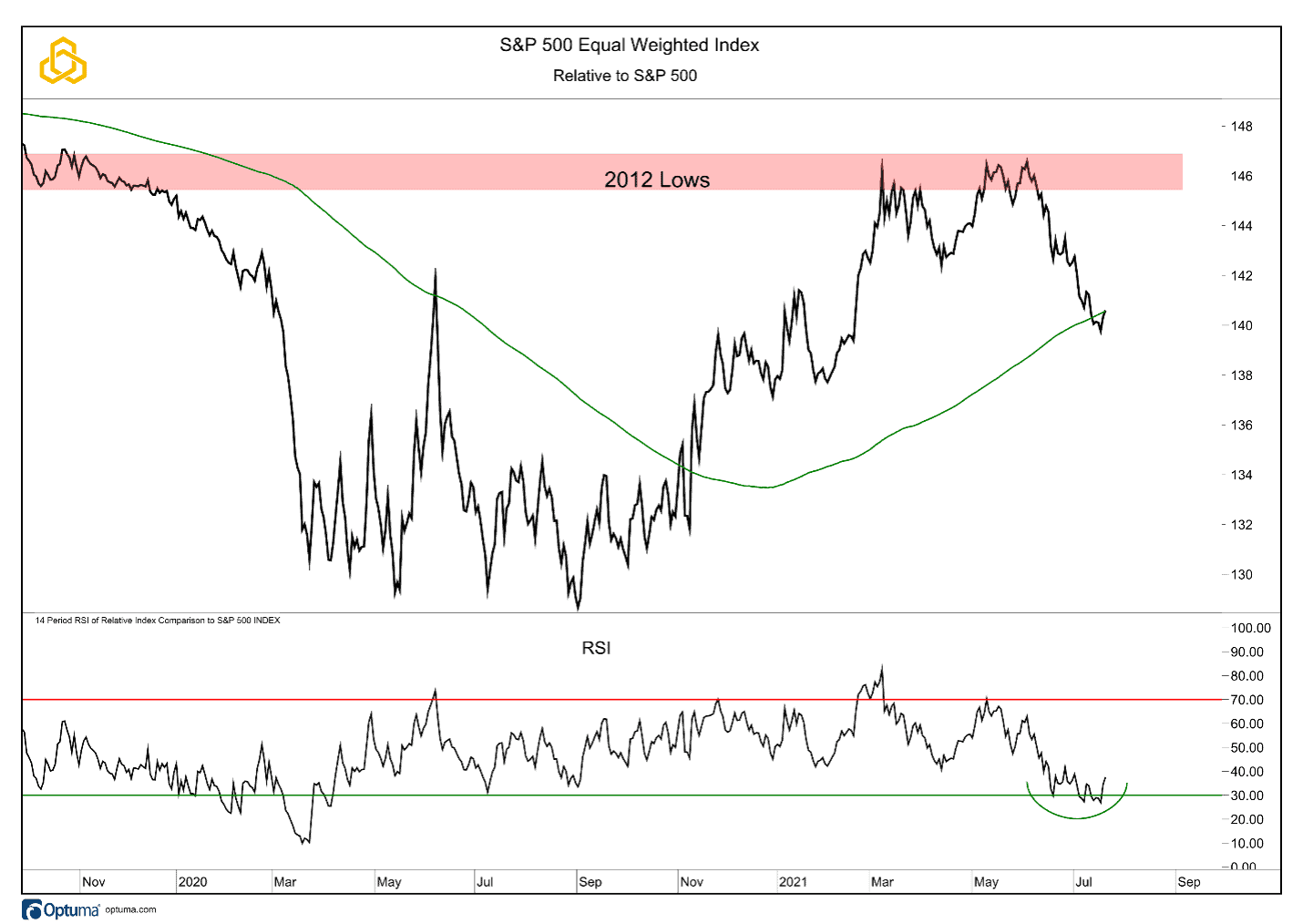
NYSE Breadth
The Advance/Decline for the NYSE has rebounded to test the 50-day moving average after breaking below it for the first time since November. While a rebound is a step in the right direction, bullish investors want to see this metric continue to move higher to confirm record levels for the major averages. As we have noted this week, the S&P 500 has thus far successfully held its own 50-day moving average.
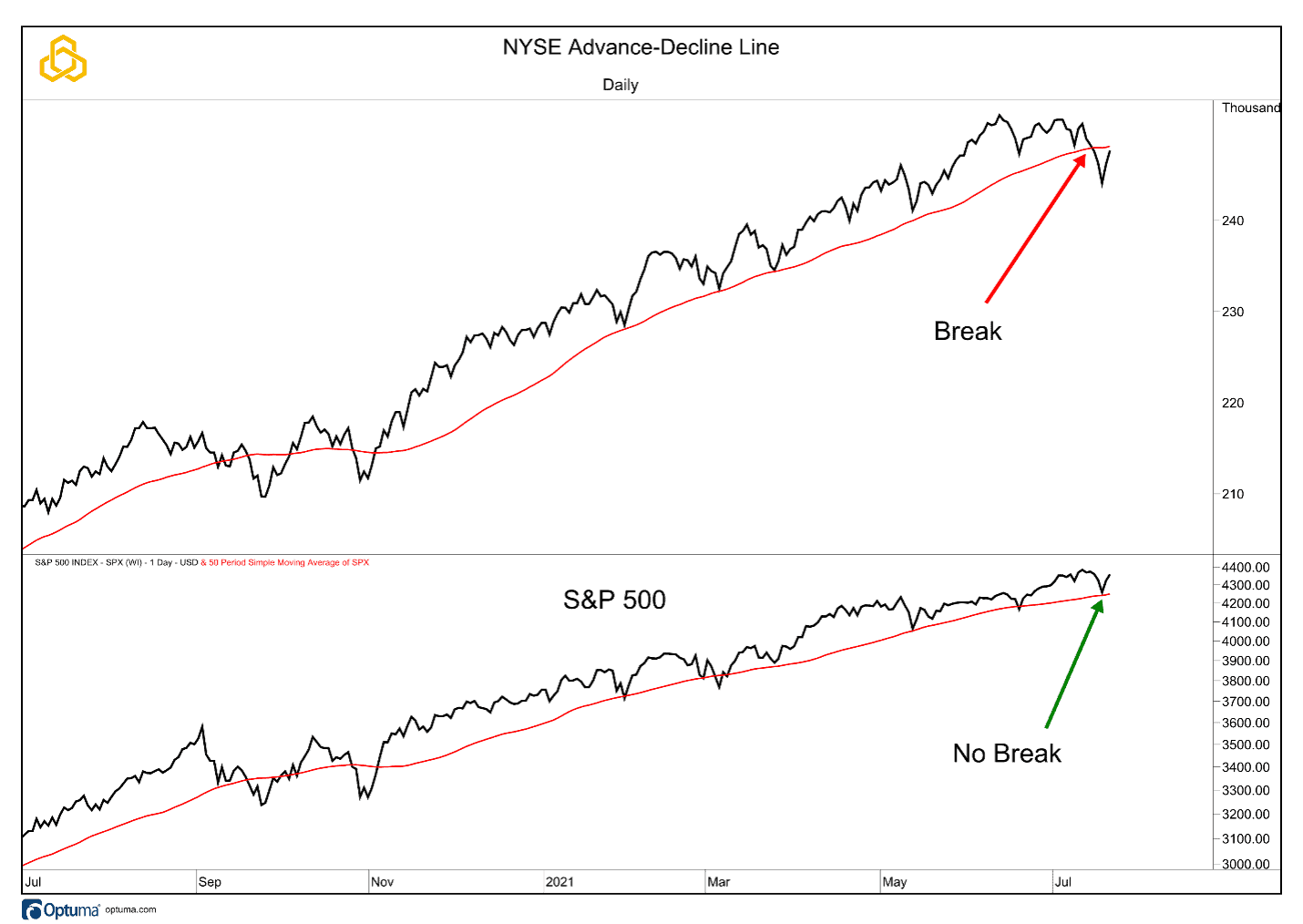
A similar dynamic is at play when looking at the NYSE’s Advancing – Declining Volume Line. The indicator has broken below the 50-day moving average while the S&P 500 has held its own moving average. In this case, the moving average on the indicator is beginning to turn lower as well.
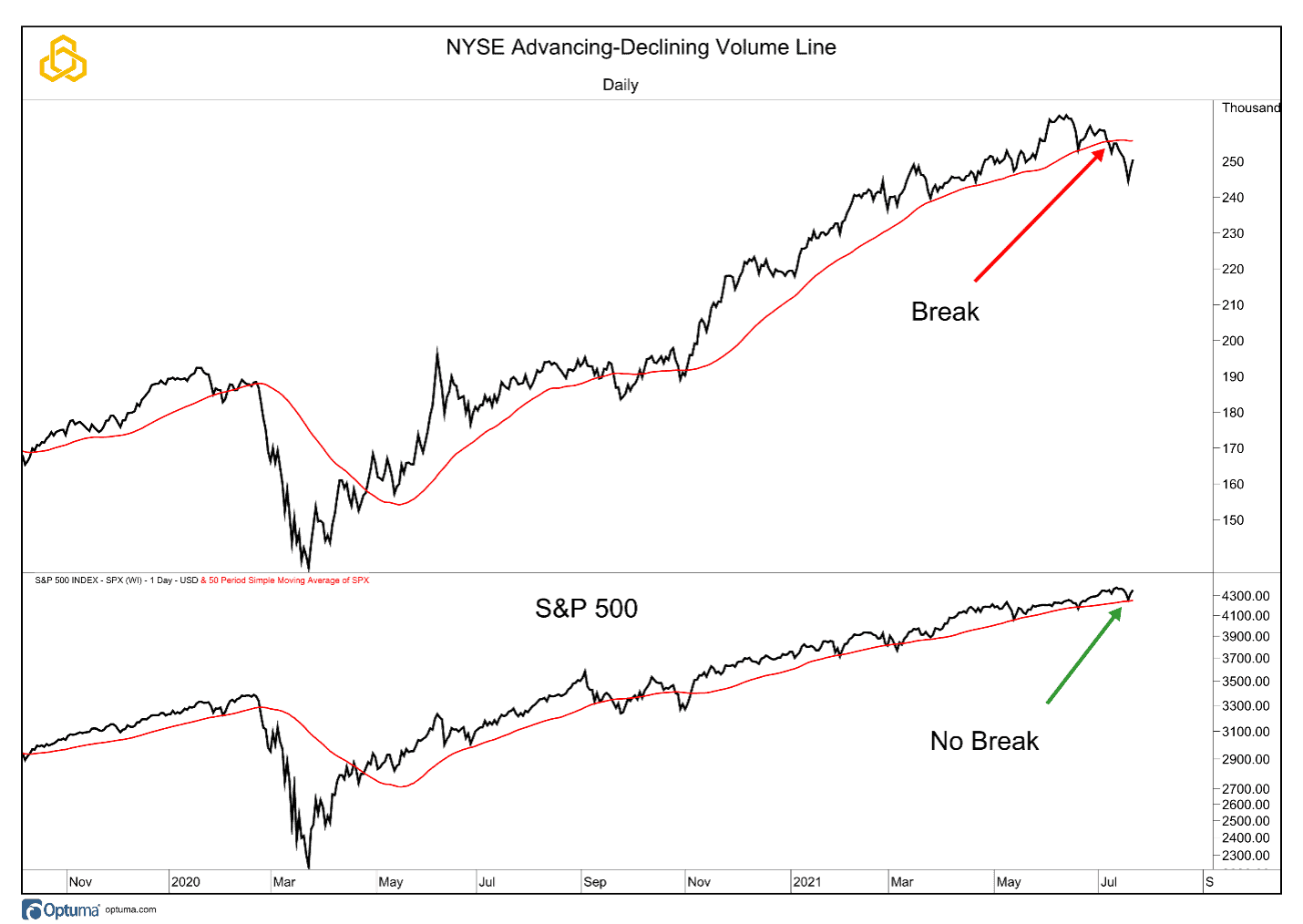
The 5-day moving averages of issues on the NYSE making new 52-week and six-month lows have begun to move lower after a brief spike to the upside. Both remain above 1%, and equity bulls want to see these numbers continue to trend toward the bottom of the page.
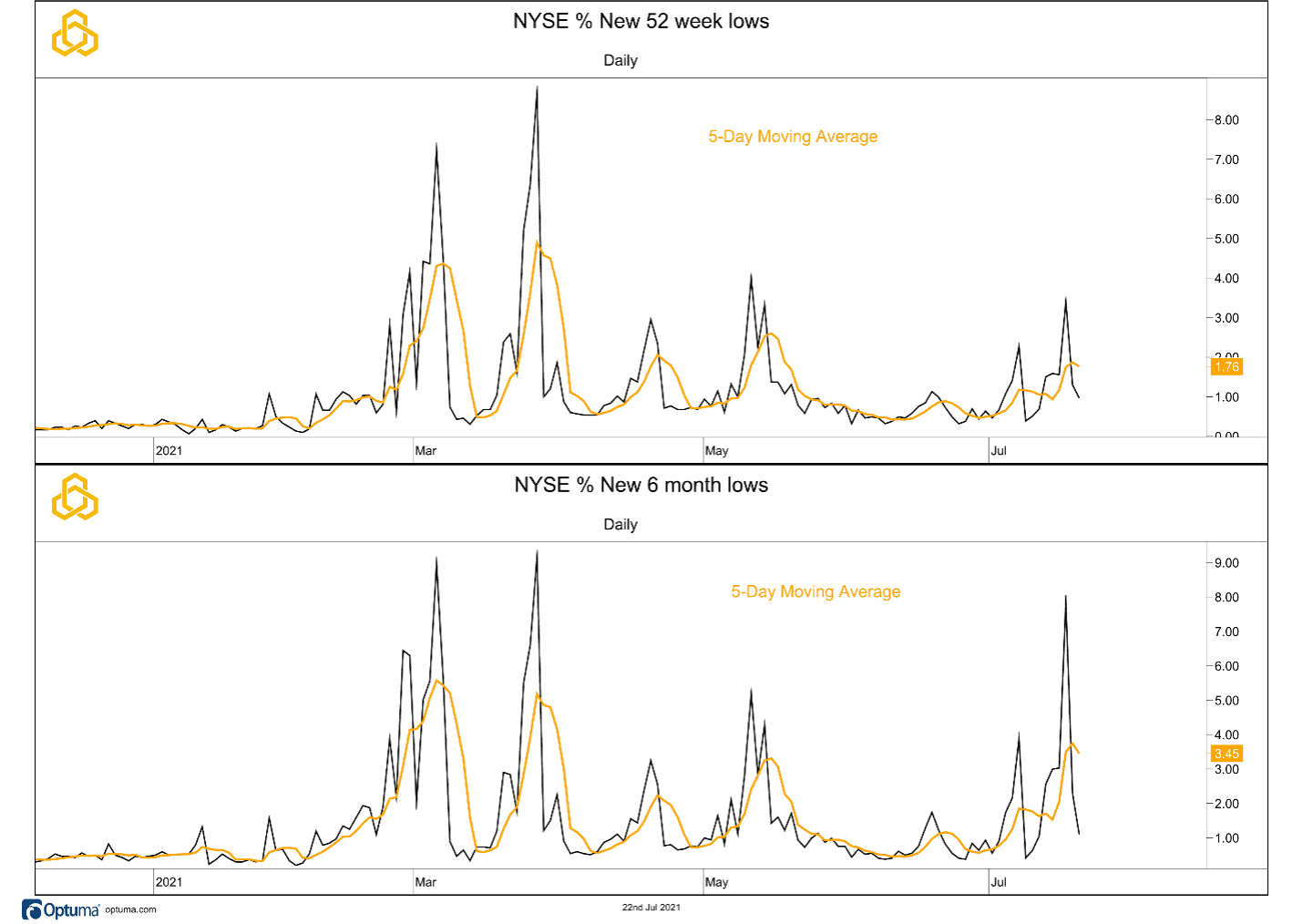
The percentage of issues on the NYSE that are trading above their respective 200-day moving averages has broken below the support level that we have been highlighting. Weakness in the equity market on Monday took this metric below the 60% threshold that marks a healthy majority of issues in long-term uptrends. A subsequent rebound has recaptured the 60% level but there is more repair work that needs to be done. We do note that the S&P 500 has not threatened its own 200-day moving average.
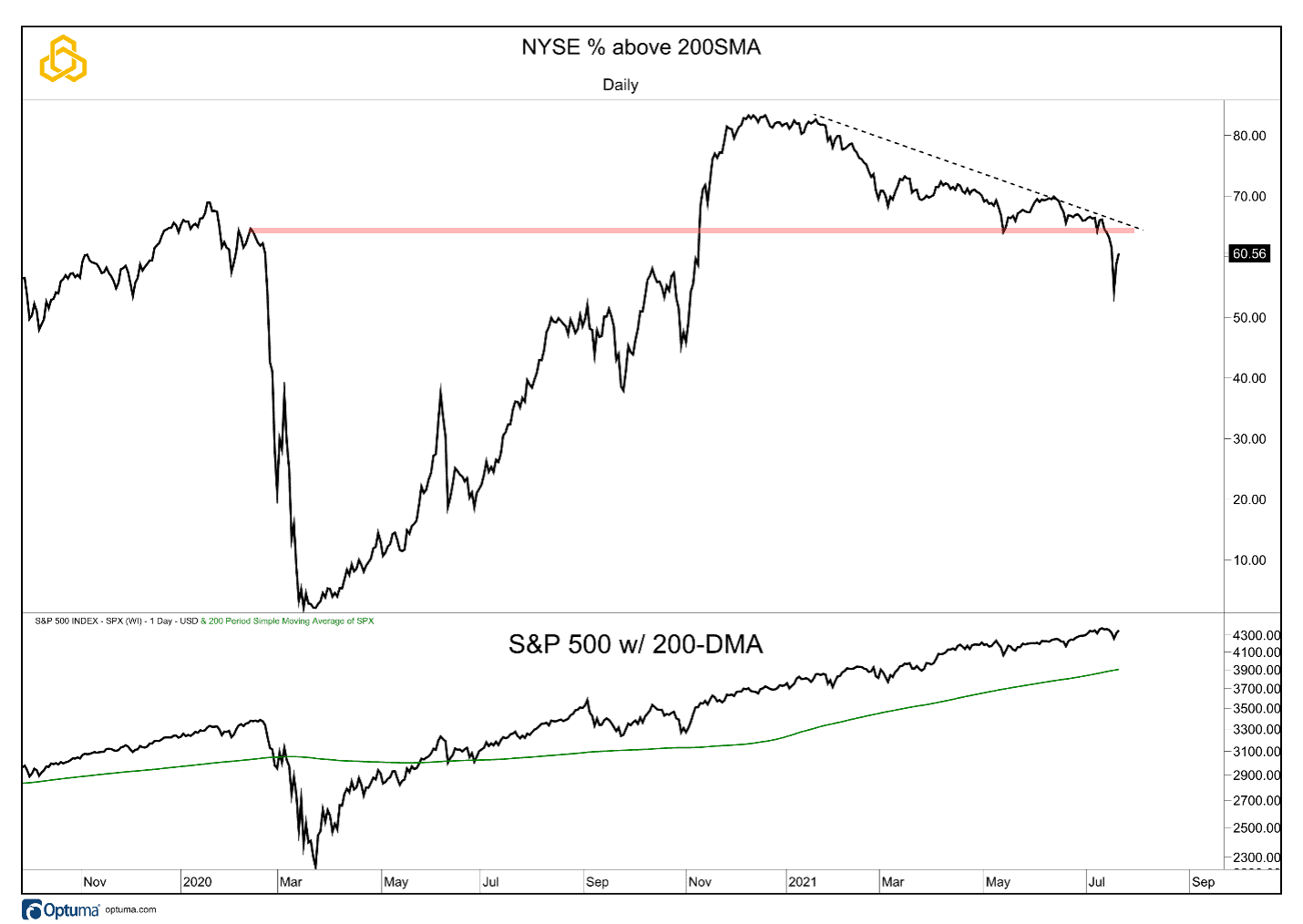
As the S&P 500 tests and holds its 50-day moving average, the percentage of stocks on the NYSE which are trading above their own measure of intermediate-term trend has fallen further this week. The current reading near 40% is up from the lows seen on Monday but still down from the reading published here last Thursday.
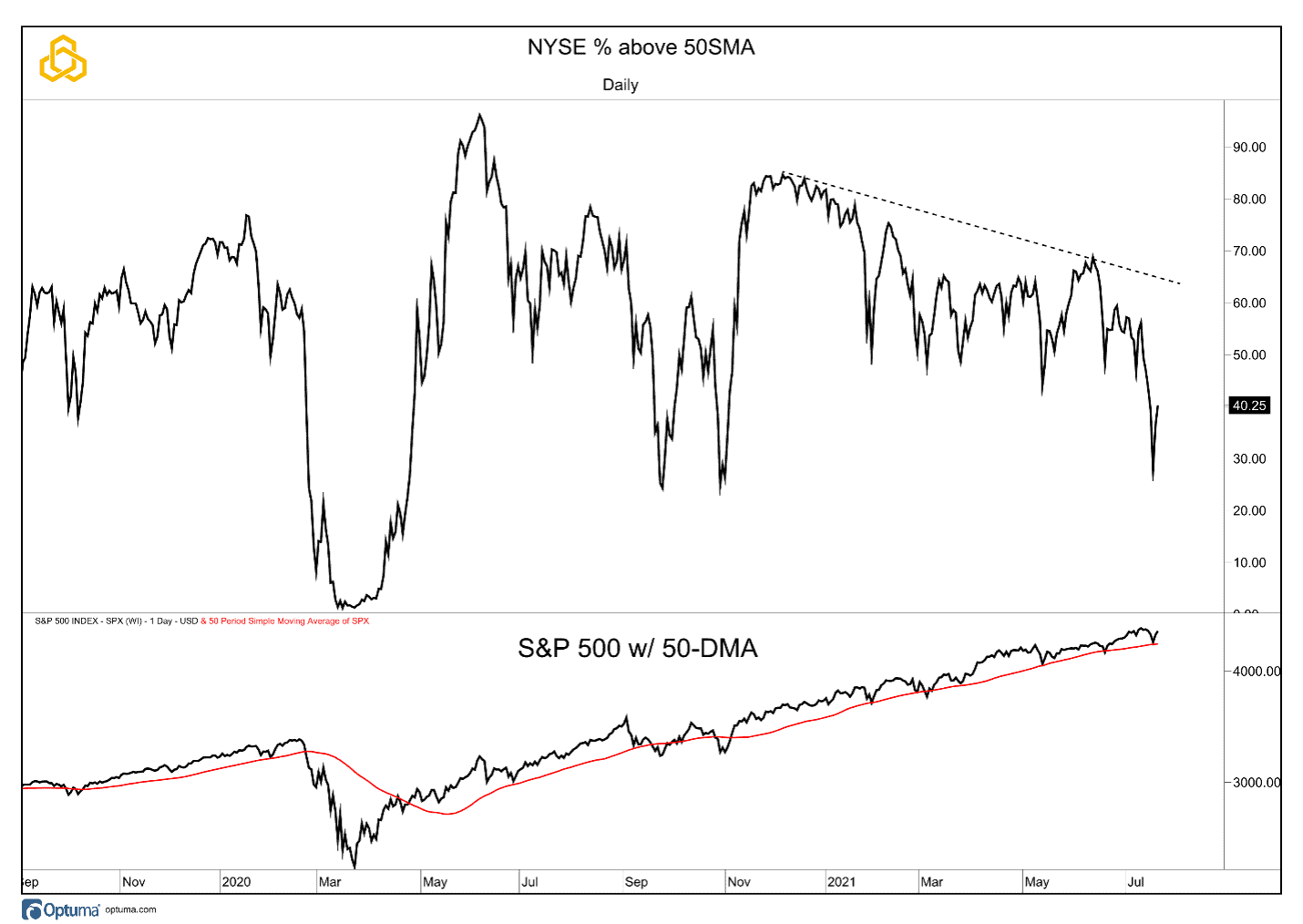
After sinking to the lowest level since October of last year, the percentage of NYSE issues above their 20-day moving average has rebounded but remains below 40%. Interestingly, the S&P 500 has held its own 20-day moving average.
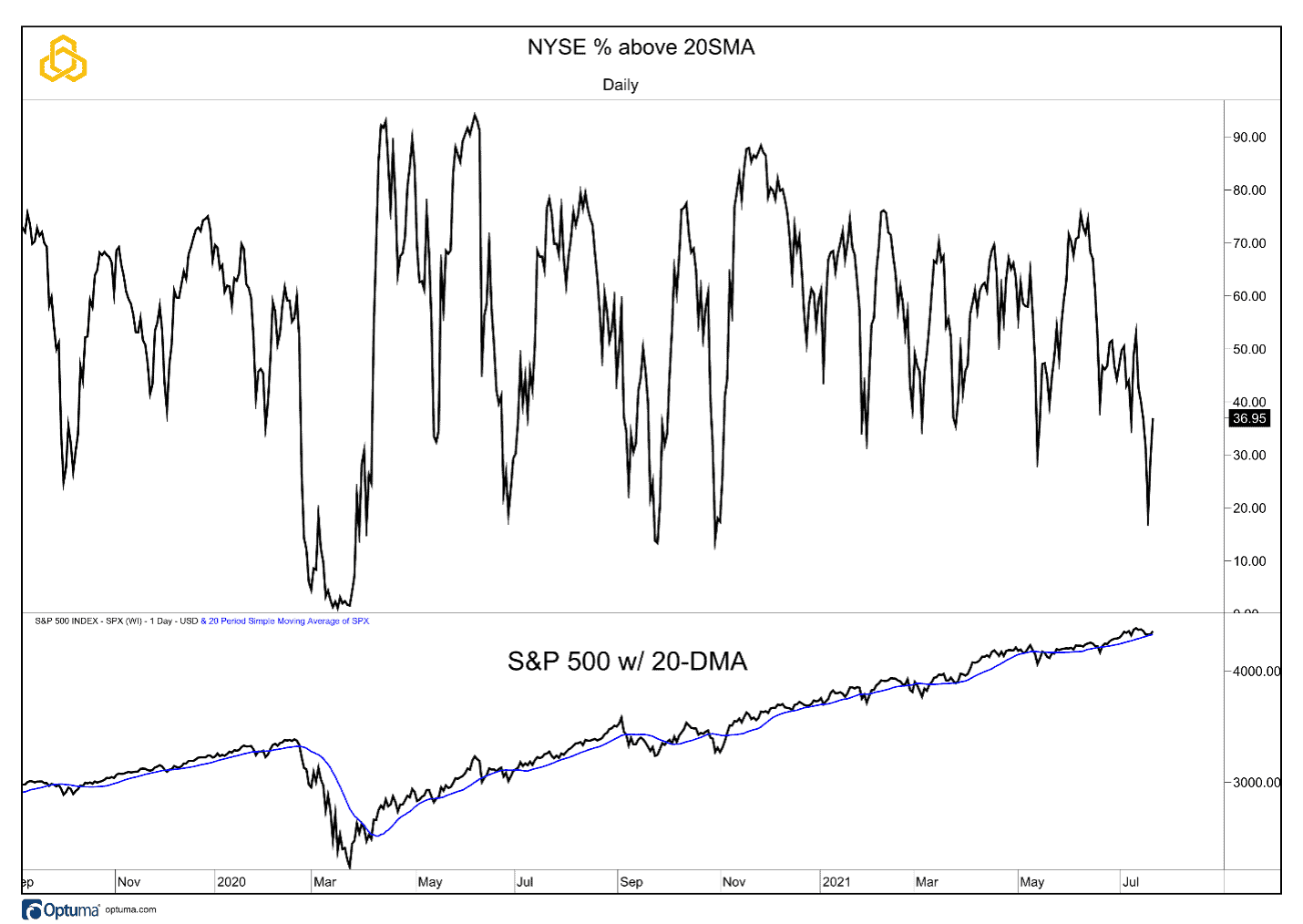
S&P 500 Breadth
Breadth metrics for the S&P 500 continue to hold up better than what we are seeing on the NYSE. The Advance/Decline Line has held support at its 50-day moving average. The percentage of stocks above their 200-day moving averages stands at 86%. The percentage above their 50-day moving average is at 50% (up on the week) while the percentage above their 20-day moving average is down slightly from 57% to 55%.
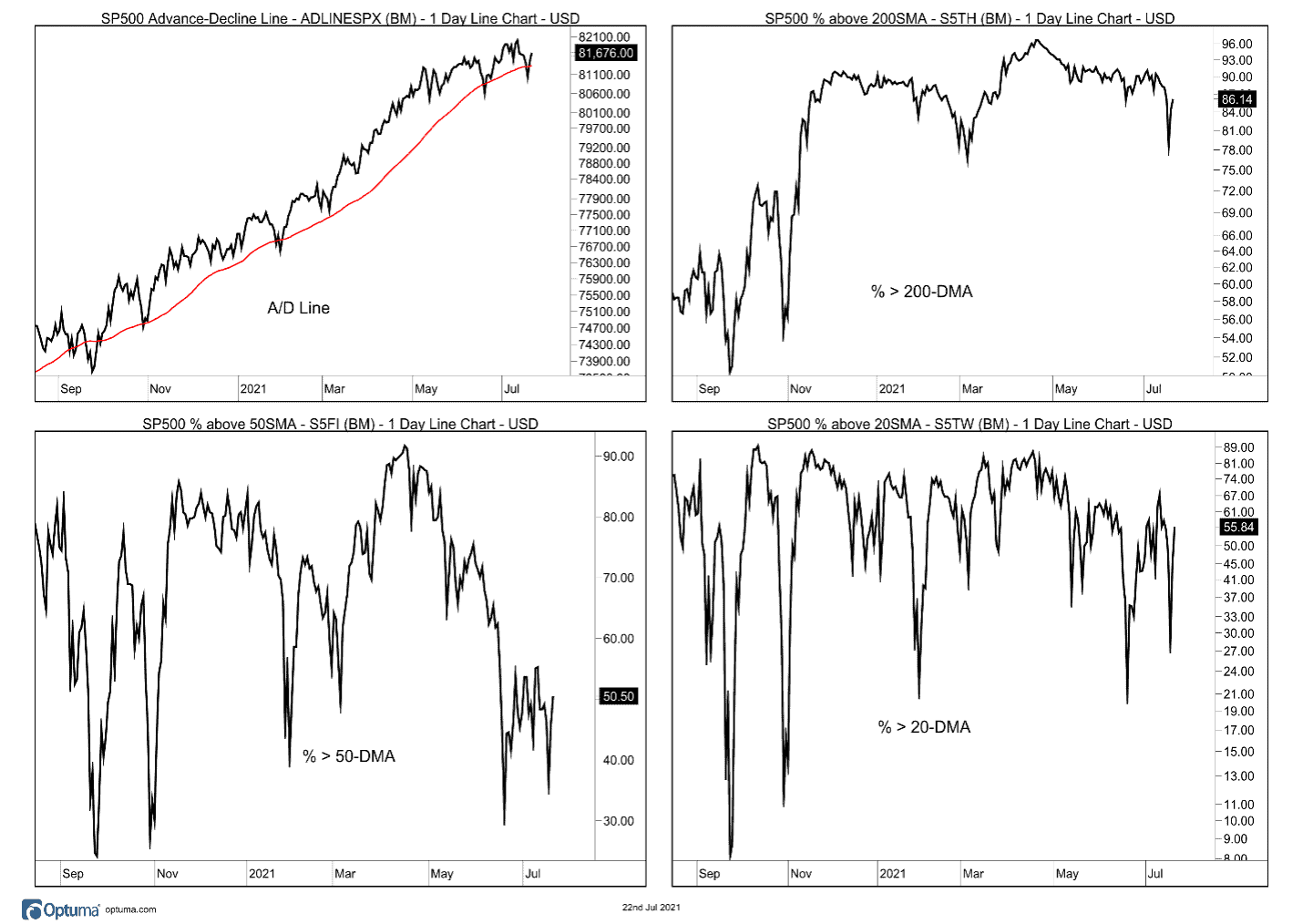
Small Cap Breadth
As noted last week, Small Cap breadth has sustained the most damage. The S&P 600 Advance/Decline Line remains below the 50-day moving average which had been acting as support since November. The percentage of stocks above their 200, 50, and 20-day moving averages all remain under pressure despite a rebound from the lows seen on Monday.
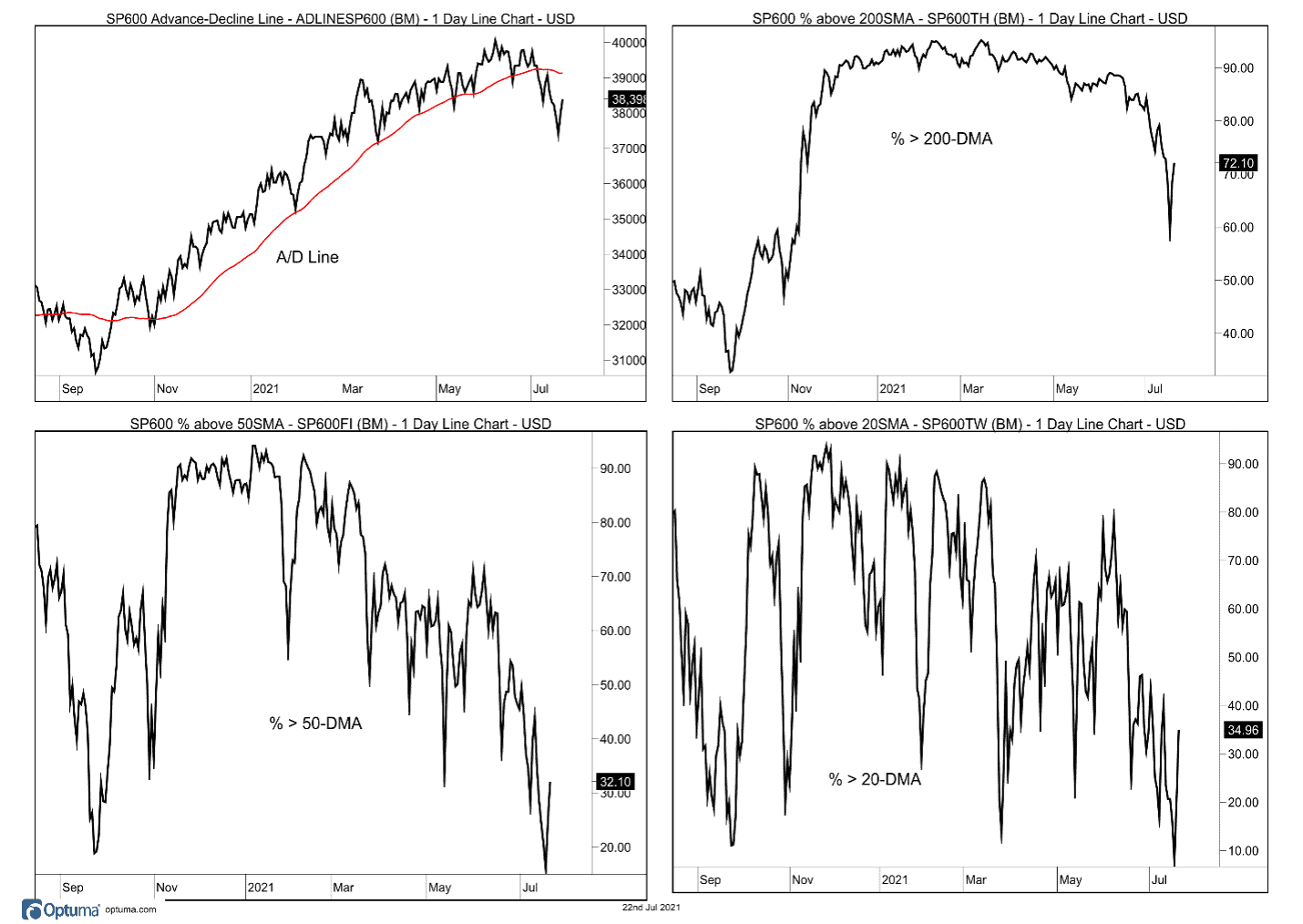
Take-Aways
Breadth metrics remain under pressure across markets, with Small Caps sustaining the most damage into Monday’s lows. There has been some improvement as the averages have rallied over the past two days, but there is more work that needs to be done. At the same time, leadership continues to concentrate into the largest names. It is worth noting that using breadth as a bearish datapoint has become a consensus view, begging the question, “what happens when everyone thinks the same thing at the same time”?
